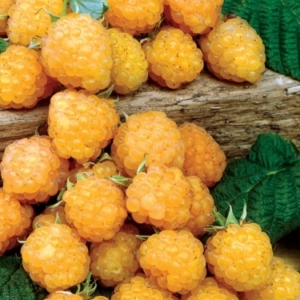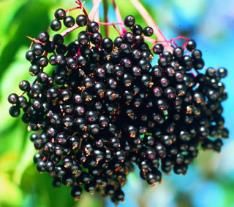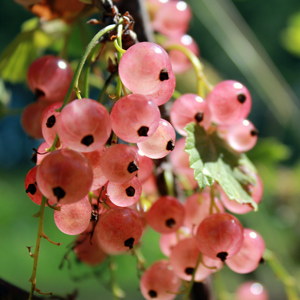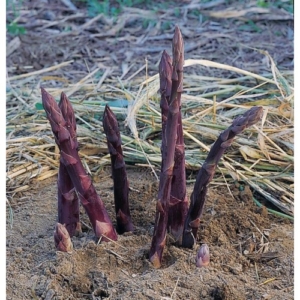Small Fruits & Edibles for 2023
We kick off spring with a big batch of bare-root small fruits and edibles. Stop in soon to embellish your food garden!
Crimson Night Everbearing Raspberry
This variety offers prolific, flavorful dark red-purple berries and great disease resistance. Introduced by Cornell University in 2012, Crimson Night is very ornamental, with dark purple canes – try it in a container! It will produce two heavy crops of berries. New canes (Primocanes) will produce berries that ripen in late summer through early fall. Don’t cut back previous years canes (Floricanes) – they will produce berries that ripen in mid-summer. Self-pollinating.
Honey Queen Everbearing Raspberry
Honey Queen lives up to its name with its deliciously sweet honey flavor packed into beautiful yellow, soft, and medium-sized berries perfect for picking and eating in the summer. It was developed in Rocky Mountain House by Robert Erskine and is very winter hardy. Canes are yellowish, floricane, arched and moderately spiny – and need trellising. Self-pollinating.

Nova Elderberry
Grow an edible landscape with this easy-care shrub. Wide clusters of creamy white flowers appear in spring. If left on the bush, the flowers develop into bountiful bunches of tender, deep purple berries used in jams, jellies, pies, and wines. Elderberry syrup is said to stimulate the immune system. Native to North America and great for attracting wildlife. Bees and hummingbirds will drink the flower nectar, and a variety of birds will eat the berries. Fruit set will be best if cross pollinated by another Sambucus canadensis variety such as ‘York’.
York Elderberry
Enjoy lots of juicy berries on this manageable 6’-8’ tall shrub. In early summer, the vigorous plants are covered with gorgeous tiny white flowers that produce large clusters of small purple-black berries in late summer. The nutritious berries have high anthocyanin content and are excellent made into jams, jellies, juices, and cordials. Fruit set will be best if cross pollinated by another Sambucus canadensis variety such as ‘Nova’. Zones 3-8.

Crandall Black Currant
The Crandall black currant is the most ornamental and sweetest of all currant varieties. Grown for beauty and fruit, the Crandall’s clove-scented, trumpet-shaped flowers bloom in spring. Enjoy fruit fresh or use in your favorite recipes. Ripens mid-summer. Very fast growing and attracts butterflies. Self pollinating but better with another variety (such as Pink Champagne!).
Pink Champagne Currant
Medium-sized currants are a fascinating translucent pink and have a wonderful flavor that is less tart than red currants and more delicate than black currants! These delicious fruits ripen in late September and are perfect for fresh eating, baking, jellies, and preserves. Grow 3 to 5 feet tall and are resistant to mildew and rust. Self-pollinating but better with another variety (such as Crandall!).

Crimson Cherry Rhubarb
One of the best flavored rhubarb varieties on the market, Crimson Red Rhubarb’s stalks have that perfect balance of sweetness and tartness. The plants product ample yields of pleasingly plump, crimson stalks that add excellent flavor and color to pies, cobblers, preserves and other recipes. Rhubarb is a perennial vegetable that performs best when planted in full sun to partial shade and in well-drained soil. Stalks should not be harvested the first season after planting.
Mary Washington Asparagus
This variety offers buttery and robust flavor, thick straight stalks, and later emerging fern-like foliage.
Sweet Purple Asparagus
In addition to the fun coloration, the flavor is said to be distinctly sweeter than green asparagus. This variety is less prone to developing fibrous strings and woody stalks.

Horseradish
Add the peppery leaves to soups and salads for an invigorating flavor or wait to harvest the roots in the fall. Plant 6” deep. Plants can spread; consider growing in a large pot or barrel.
